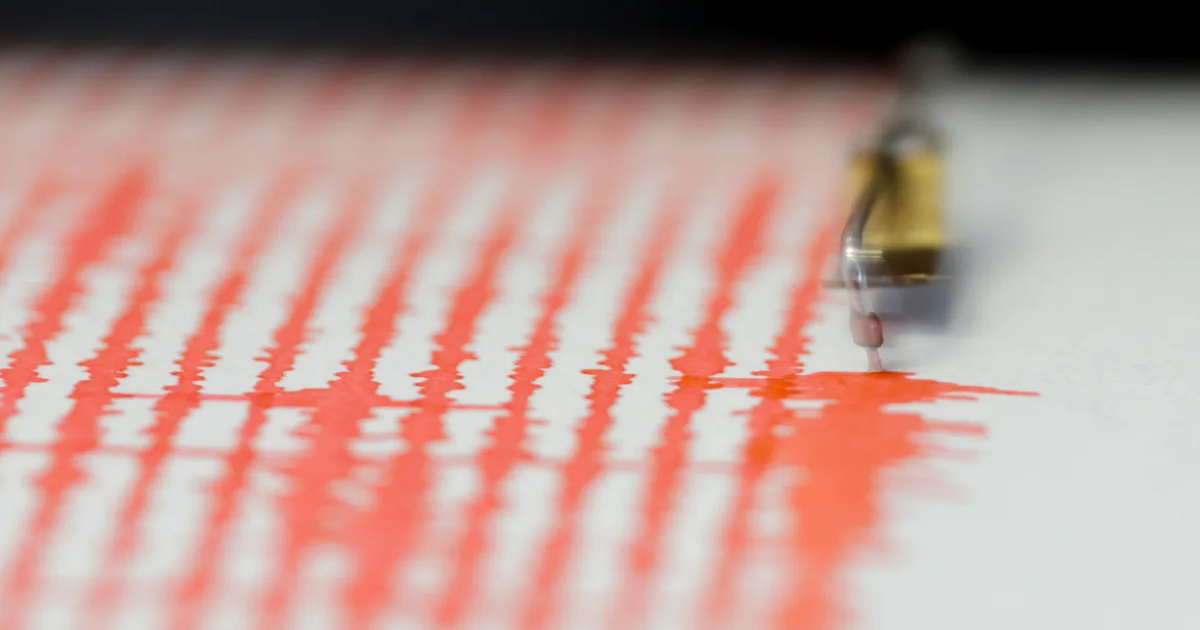New Jersey’s most recent 2.7 magnitude Bergen County-centered earthquake didn’t much surprise one geologist, who had predicted the Northeast region would be experiencing a period of increased seismic activity.
In 2020, Alexander Gates, a geology professor at Rutgers University Newark campus, said he and one of his graduate students theorized that over the next several years, there would be an upswing of earthquakes in the area.
In reviewing the available data, they said they uncovered what will be a 40-year cycle of earthquakes that will periodically rock Metropolitan New York. The most recent quakes appear to be part of that cycle, he said.
Story continues below photo gallery.
Gates and graduate student Michael Kalczynski brought the information to a meeting of the Geological Society of America. They were not able to get their findings published, but Gates said it doesn’t mean they aren’t on to something. Gates said he still has the abstract they produced and hopes to someday publish the entire work.
From their data, they concluded about five years ago that the New York/New Jersey region was overdue for an earthquake of 3.8 magnitude or greater.
Four years later, on April 5, 2024, Gates was vindicated when a 4.8 magnitude earthquake was recorded with an epicenter in Tewksbury Township. The shaking was felt in New Jersey, New York and neighboring states.
“If it had published, I’d be famous,” he said.
Moreover, the same findings also predicted an upswing in quakes throughout the region. He said there were around 200 quakes recorded in 2024, as well as several in 2025, such as Tuesday’s 2.7 magnitude earthquake centered near Hillsdale and Saturday’s centered in Hasbrouck Heights.
High Bridge, NJ — April 11, 2024 — Assistant Professor of Structural Geology Folarin ‘Fola’ Kolawole and his staff from the Columbia University Lamont-Doherty Earth Observatory does fieldwork near the epicenter looking for clues of the impact of last Friday’s 4.8 magnitude earthquake. Here Prof. Kolawole examines an outcropping of rocks that he will measure along the road.
Part of the reason he said his theory was glossed over is that it contradicts the current theory that the 200-million-year-old Ramapo Fault is the source of the region’s seismic activity.
The Ramapo Fault is the largest in the Northeast and runs from Pennsylvania through New Jersey, snaking northeast through Hunterdon, Somerset, Morris, Passaic and Bergen counties before coming to an end in New York’s Westchester County.
Story continues below video.
The most recent quakes, particularly the one in Hasbrouck Heights, are not close to the Ramapo Fault, he said.
Gates, however, contends that the newer faults, 65 million years old, caused by the pulling of the region’s plates to the east, are the source of the quakes. These faults run throughout the region and even under New York City.
While last year’s Tewksbury quake released tension along the fault lines, its movement caused tension elsewhere. Subsequent earthquakes can occur to release the tensions created, he said, adding this type of low-level seismic activity can last for several years.
The data they’ve scrutinized has shown a roughly 40-year cycle, which has been going on since at least 1884.
The professor, to teach his classes, takes students on field trips to the woods where they can find the faults that run at angles to the Ramapo Fault.
How common are earthquakes in the Northeast?
To put earthquake magnitudes in perspective, seismologists say each year there are about 900,000 earthquakes of 2.5 magnitude or less recorded by seismographs.
Rutgers Newark geology professor Alexander Gates and one of his graduate students, produced an abstract, a sort of short version of a paper, in 2020 that predicted an upswing of local earthquakes in he next few years. He said he may have been vindicated by last year’s 4.5 earthquake in Tewskbury and the susbsequant spate of earthquakes since.
These mild tremors are usually not felt. Although in North Jersey, these quakes can often be heard because they are shallow.
“The crack you hear is the crack of rock breaking,” Gates said.
There are also 30,000 quakes annually that measure between 2.5 and 5.4 on the Richter scale, and these are often felt and cause minor damage.
About 500 quakes worldwide are recorded between 5.5 and 6 magnitude per year and cause slight damage to buildings and structures.
The 100 that fall within 6.1 and 6.9 may cause lots of damage in populated areas.
The 20 or so that fall within the 7 and 7.9 magnitude per year are considered major and cause serious damage.
Those that measure at 8 or greater can destroy communities near the epicenter and average one every five to 10 years.
Earthquakes in the Northeastern United States are intraplate ones, meaning they occur within the plates. Earthquakes of this type account for more than 90% of the total seismic energy released around the world.
Plates are the masses of the earth’s crust that slowly move, maybe as little as a few centimeters a year to as much as 18 centimeters, around the globe. Faults such as the San Andreas are interplate and occur near where two plates meet.
This article originally appeared on NorthJersey.com: Earthquakes in NJ: Geologist has different take on cause


